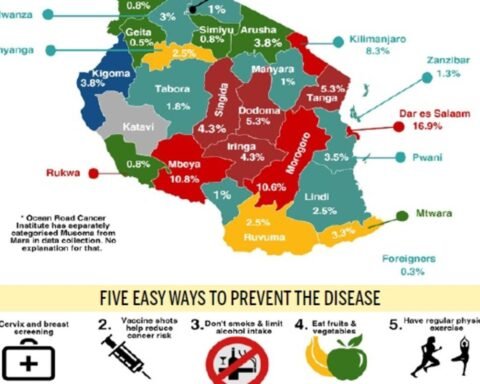Tanzania’s national parks and the Ngorongoro Conservation Area have recorded a remarkable 10.3 percent increase in tourism earnings for the year ending March 2025, reaching TZS 164.3 billion.
The growth comes amid rising visitor numbers and sustained efforts to promote the country as a premier safari destination.
According to the latest Consolidated Zonal Economic Performance Report, the number of visitors to the parks climbed by 5.5 percent to 538,147, with non-resident tourists accounting for about 70 percent. The northern circuit, home to iconic sites such as the Serengeti National Park and Kilimanjaro, continued to dominate the sector, drawing 385,117 visitors and generating TZS 115.5 billion—over 70 percent of total earnings.
Meanwhile, the Lake Zone saw a decline in visitor numbers by 18.3 percent to 94,397, although revenue grew modestly by 10.8 percent due to higher fees for international tourists. Other regions experienced mixed outcomes, reflecting both the uneven distribution of attractions and differences in local infrastructure and marketing.
Tourism analysts attribute the overall growth to a combination of government promotion, private sector engagement, and global interest in Tanzania’s rich wildlife and cultural heritage. Beyond the immediate economic impact, tourism revenue plays a critical role in conservation efforts, funding park maintenance, anti-poaching programs, and community development initiatives.
Also Read; Trump Criticizes Russia-India-China Growing Alliance
The Ngorongoro Conservation Area uniquely balances wildlife preservation with human habitation. Local communities benefit directly from tourism through employment, craft sales, and hospitality services, highlighting the importance of sustainable tourism practices that protect both livelihoods and ecosystems.
Despite the positive trends, experts caution that concentrating tourism in a few popular areas can strain natural resources. Efforts to diversify visitor destinations, invest in infrastructure across regions, and encourage domestic tourism are key to ensuring long-term sustainability. Integrating conservation awareness with tourism promotion not only safeguards Tanzania’s rich biodiversity but also enhances the visitor experience and preserves the nation’s natural heritage.
This growth in tourism reflects Tanzania’s broader strategy to position itself as a leader in eco-tourism and sustainable development. By blending economic opportunities with environmental stewardship, the country demonstrates how carefully managed tourism can support both prosperity and the preservation of iconic landscapes.







